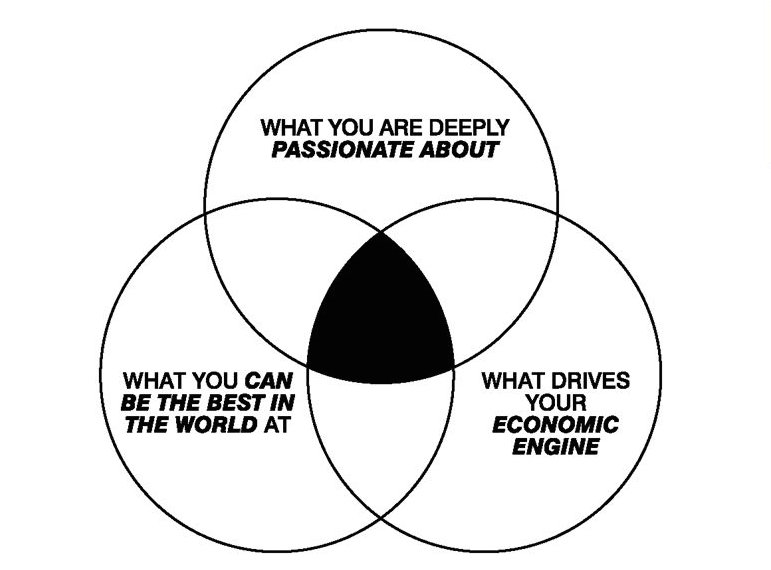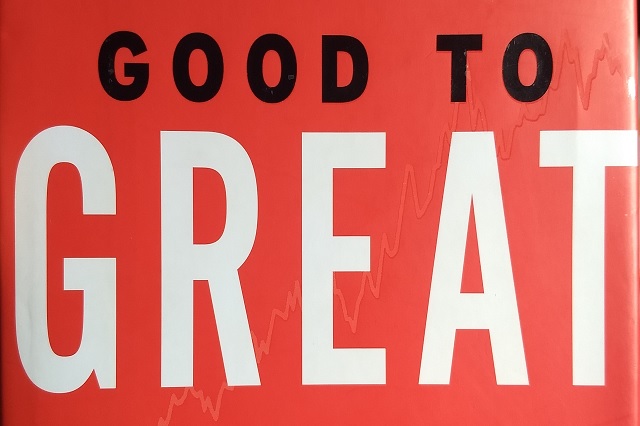This book was presented to me by Mr. Kranti Kumar Sir, Principal of My Engineering College and I’ve learned a great deal from the defining strategies the book reveals. Jim Collins is extensive in his research and brings to us the phenomenon of Excellence in the most simplistic of the manners. Let’s get to the details.
1. Level 5 Leadership
Jim Collins describes in no ambiguous terms that the force which drives the company to excellence is never thrusted by a single person. His research mentions that the celebrity type leaders with massive personalities are seldom the ones which make the cut from Good to Great. As opposed to the popular sentiment the leaders who deliver the push to greatness are the unusual suspects. These leaders are humble, self-effacing and are extremely accommodative.
Humility + Will = Level 5

Most people found Abraham Lincoln’s modesty, shy nature and awkward mannerism as signs of weakness but little did they knew of the firm resolve with which the great man operated. Despite heavy resistance from his own party men, Lincoln went on to resourcefully take decisions which at that time were radical but inclusive which kept the country at fore instead of personal ego. The rest is history as you are aware of the great nation which was founded on the principles of equality. An epitome of Level 5 leadership.
Marvel fans, does Captain America ring a bell?
2. First Who then What
Jim Collins insists on the old adage “People are the most important asset” but tweaks a bit and turns it around to “Right people are the most important asset”. The books talks of the assembly of the right people first and then deciding on the endeavour which includes the vision and the goals of the company. The idea is to select the team with the right people and placed on the right job. He says that the people are to be made to sit on the bus on the right seats before the bus heads for its destination and the wrong people should be alighted off the bus which is equally important.
Many times we credit the Marines (Armed forces) for building the people’s values, but it is not entirely true. The recruits are first judged on their core values. The recruits are tested on who they are? Why they are? during the selection trials and then they are put on the mission of achieving the organization’s goals.

The company will suffer if the right people are put in the wrong places and will suffer further if the wrong people are not ejected. The same sentiment was expressed by Louis V Gerstner Jr. during this stint at the IBM. Gerstner Jr. took the decision to retrench people from the work force on basis of competence and began building a new IBM with the right people at the right places.
3. Hedgehog concept
The author insists that if you have been doing your core business since many years then it does not necessarily mean that you are the best at it. And if you are not the best in your core business then you cannot form the basis of a Great company. The deep understanding of the three intersecting circles is required.
The book speaks of the categories of people, Foxes and Hedgehogs. Foxes are clever and cunning. They can scheme and prosper. Their ability to draw out complex plans to trap their prey are unmatched but when it comes to feasting on hedgehog, the usual reply from the dowdier creature is “Here we go again. Will he ever learn?” Hedgehogs are not simpletons but they have expertise in simplifying complex jargon. They are extremely good at what they do as opposed to the cunning foxes who can reach many conclusions in different ways with eloquence.

Some of the examples of the famous people belonging to the category of Hedgehog are Charles Darwin and his simple theory of Natural selection, Adam smith and his novel idea of the Invisible hand and Albert Einstein and his path breaking discovery of the Theory of Relativity.
Jim entails the three intersecting circles of the Hedgehog principle as follows:

What you can be the best in the world at
It simply states that your core competence does not necessarily mean that you will be the best in that activity and the thing that you can be best at is not presently engaged by you. This certainty is a must to move ahead towards greatness.
What drives your economic engine
Sustained and robust cash flow are the most important elements to be looked at for maintaining a profitable establishment
What you are deeply passionate about
The good to great companies are focused on activities that ignite their passion. The idea is not to stimulate passion but to discover what makes you passionate.
4. Culture of Discipline
Jim believes that very few companies have a Culture of Discipline. If you have disciplined people, you do not require hierarchy and when you have disciplined thought you do not require bureaucracy. And lastly, disciplined action does not need excessive controls. The idea is to inculcate a discipline with a tinge of entrepreneurship to arrive at the magical alchemy of greatness.

This philosophy coupled with the right people and the Hedgehog principle will ascertain the level of cultural discipline. Freedom to work is just half the truth, the other half is the responsibility towards work. It takes discipline to say NO to projects which seem lucrative but fall out of line with your core competence and values that is which outlie the three circles.
5. Flywheel
The continuous and diligent effort is what the book speaks of. As is known, all the revolutions, breakthroughs and inventions have never happened in the spurt of the moment. They have taken a lot of time and sustained effort to reach the intended goal. Similarly, achieving greatness for companies and individuals is akin to pushing a giant flywheel with incremental thrust to set it in motion. It is never the one massive push that does the trick. The incremental force with sustained and disciplined effort eventually gets the giant flywheel rolling

Thomas Edison had to conduct 2000 experiments to culminate a successful invention of the incandescent Electric bulb. The feat was no less than a giant flywheel set in motion by the great inventor of the 19th century with his diligent, consistent and passionate efforts.
This is the core message that I received from the book Good to Great by Jim Collins. It is a great book and I strongly recommend you to read it.
Thanks for reading.












Excellent read, Positive website, where did you u come up with the info on this posting?
I’ve read some of the articles on your website now, and I really like your
style.
Best regards,
Thompson Raahauge
Thanks Thompson. I attempt to give a concise version of the books that I’ve read for the benefit of many.